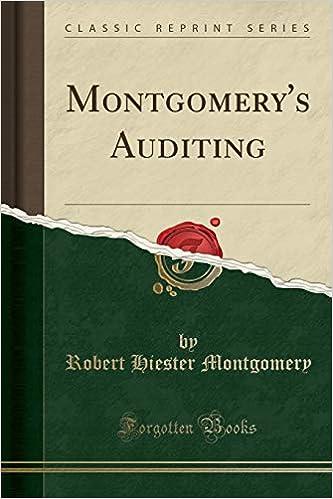Question
Prepare journal entries for the 18 transactions. Prepare a trial balance showing what the ending ledger balances would be after the 18 transactions. Prepare an
Prepare journal entries for the 18 transactions. Prepare a trial balance showing what the ending ledger balances would be after the 18 transactions. Prepare an income statement for the year. Prepare a statement of stockholders equity for the year Prepare a balance sheet at the end of the year. Northeast Company January 1, 2007, Balance Sheet Cash 20,000 Accounts receivable 110,000 Less: Allowance for doubtful accounts (10,000) Inventory (500 units @ $20 each) 10,000 Equipment 9,000 Less: Accumulated depreciation (2,000) ----------------- Total assets 137,000 Accounts payable 20,000 Long-term notes payable (5% interest, due in 2010) 100,000 Capital stock 10,000 Retained earnings 7,000 ------------------- 137,000 Transactions or events: The company collected 98,000 of the accounts receivable in cash. The company wrote off one $1,000 accounts receivable from J. Jones On Jan. 1, the company bought a car for $30,000. The company paid 19,000 of its accounts payable in cash. The company bought 900 units of inventory for $21 each in cash. The company bought a 1 year insurance policy for $2400 on October 1. The company paid rent for the months January through December of $18,000 On July 1, the company bought rights to a patent for $20,000. The patent has ten more years of useful life. On Dec 31, the company paid rent for Jan. 2008 for $1,500. On Dec. 1, the company bought another 200 units of inventory for $22 on account. On Dec. 15, the company sold 1,300 units for $30 each. 1000 were sold for cash, and 300 on account.[The company accounts for its inventory on the FIFO basis, so the first items bought are assumed to be the first ones sold.] The company decided to record bad debt expense of $1,000. The company recorded depreciation on the equipment. The equipment is one year old. It had a cost of $9,000, salvage value of $1,000, and an expected useful life of 4 years. The company recorded depreciation on the car, using the straight line method, assuming it had a five year life, and salvage value of $6,000. The company made the appropriate adjustment to reflect the fact the insurance policy only had nine more months left of effectiveness. The company accrued the interest that had been built up on the long-term notes. The money had been borrowed on January 1, 2007. No payments of interest or principal were due until some time in 2008. The company made the appropriate entry to record amortization on the patent on December 31. On December 1, the company paid dividends of $1,000 to its shareholders.
Step by Step Solution
There are 3 Steps involved in it
Step: 1

Get Instant Access to Expert-Tailored Solutions
See step-by-step solutions with expert insights and AI powered tools for academic success
Step: 2

Step: 3

Ace Your Homework with AI
Get the answers you need in no time with our AI-driven, step-by-step assistance
Get Started


